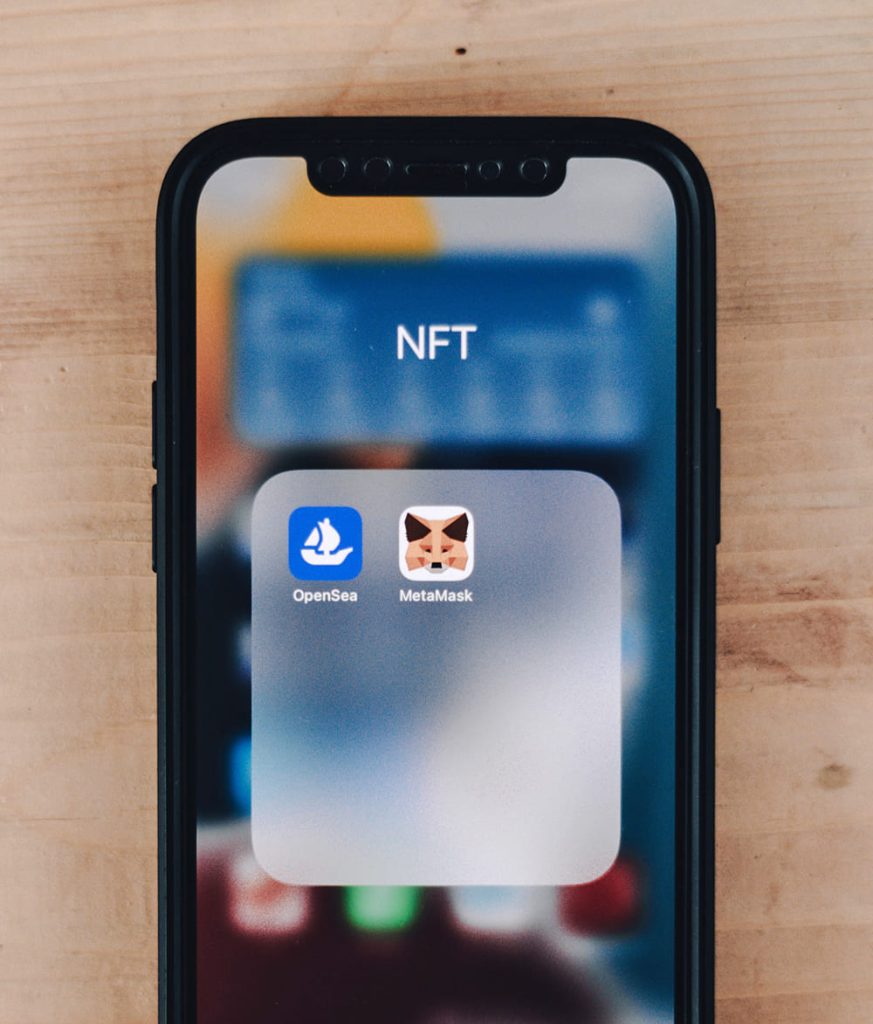Pinpointing exactly what year NFTs were first developed is a subject that is up for debate. This article focuses on NFTs minted on Ethereum, so there are some early projects that will not be discussed in this article.
What is an NFT? The definition of an NFT is a non-interchangeable unit of data stored on a blockchain, a form of digital ledger, that can be sold and traded. NFTs range from works of fine art to real estate with new advancements and projects created every day. While NFTs are still a relatively new technology, they have a rich and detailed history that we will be exploring today in detail.
Pinpointing exactly what year NFTs were first developed is a subject that is up for debate. In order to approach the topic as thoroughly as possible, we will be addressing a handful of projects that are believed to be the first NFTs. We will also explain the reasons why they were created. This article focuses on NFTs minted on Ethereum, so there are some early projects that will not be discussed in this article.
2015 – Terra Nullius
According to research done by Adam McBride, Terra Nullius was the first NFT on ETH. Defined as land that is legally deemed to be unoccupied or uninhabited, Terra Nullius created a new frontier for investors. First minted on August 7, 2015, Terra Nullius is a project designed to allow users to “Stake a claim on the blockchain”.
Pre-dating most established NFTs by two years, this is the first product that is considered a true NFT. While most major NFTs today mint thousands of their products, Terra Nullius flew under the radar with only 22 minted at the initial launch. To date, the dev team has minted an additional 25, leaving their total at only 47.
Due to their relatively limited launch in comparison to some of the larger projects that marked 2017, it is easy to see why Terra Nullius was overlooked for so long. In fact, the devs responsible for Terra Nullius did not refer to their creation as an NFT. Instead, they simply identified it as an “interactive Ethereum Contract”.
March 2017 — Rare Pepe on Ethereum
While the first Rare Pepe NFTs were launched in October of 2016, they weren’t traded on ETH until 2017. Titled Peperium, the project was designed to allow meme trading on the blockchain.
With such a strong cult following surrounding Pepe the Frog and the meme culture that surrounds crypto, it made sense that it was one of the first established NFT projects that transferred over to Ethereum. With a strong community that exists to this day, Peperium serves as an example of how NFTs have largely become community-based projects.
June 2017 — CryptoPunks
In 2017, Developers John Watkinson and Matt Hall launched CryptoPunks and forever changed the NFT world. CyptoPunks started as a collection of 10,000 randomly generated characters that were each uniquely different. They might not have been the first NFTs to be minted, but they were the first NFT project that went mainstream and began to pull in a more varied group of people into the NFT space. Not only that, but CryptoPunks was the inspiration for the ERC-721 Standard that a majority of NFTs use to this day.
With the current lowest bid for a CryptoPunk sitting at 66.5ETH (Currently about 215,536.47 USD), CryptoPunks is easily one of the most profitable NFT collections to date. Matt and John’s success was one of the driving factors for the expansion of the NFT market.
New investors, encouraged by their success, began to produce and trade their own NFTs in hopes of seeing even a fraction of the success that they saw. In addition to new entrepreneurs, celebrities joined the bandwagon and began to invest with CryptoPunks.
Serena Williams, Snoop Dogg, Steve Aoki, and Odell Becham Jr. are just a handful of the celebrities that are currently invested in CryptoPunks.
2018-2020 – The NFT Renaissance
2018 marked the start of the NFT Boom. Not only was the marketplace beginning to take shape on sites like OpenSea, but NFTs began to enter the real world for the first time. 2018 was known as the year of acceptance for the Non-Fungible Token. Moving into the mainstream, NFTs were able to gain more acceptance by those outside of the traditional ‘Tech Bro’ sphere.
In January 2018, the Rare Digital Art Festival hosted an NFT-focused gathering for collectors to explore and bid on popular pieces. On February 12th, NonFungible.com launched the first NFT Yearly Report tracking trends on the Ethereum chain. This was the first time ETH-based NFTs and cryptocurrencies received a defining, comprehensive market review.
Moving into 2019, Web3 wallets like Metamask became more accessible and widely utilized by the community. NFT-based games and collectibles began to rise in popularity allowing for the gaming community and NFT community to merge. Previously, games such as Etheria (2015) and CryptoKitties (2017), while popular, were not joined by other game developers until the NFT boom of 2018-2020.
2020 marked a continuation of NFT growth. Major news networks began to pick up on stories related to NFTs and the general population was exposed to them for the first time. Rarible, a decentralized exchange for NFTs, launched with great success, even though it had some issues relating to washtrading. In addition, fractionalized NFTs, the division of larger NFTs into more affordable segments began to be popularized and allowed for a larger number of individuals to own previously sold out or unaffordable projects.
With an explosion of NFTs and a surge of new buyers fueling the market, the NFT community saw record profits and a flood of new artists entering the field. This boom lasted well through 2020 and only began to stabilize during 2021.
2021 – The Year of Representation
One of the biggest and most exciting developments of 2021 was the launch of the first-ever female-run NFT projects. The discovery that Fame Lady Squad, a project that had previously held the status as the first female-run NFT project turned out to be operated by Russian men. This opened up a spirited discussion about the lack of female representation in the NFT space and put a fire under those who were eager to make changes.
Determined to increase the presence of women in the Web3 space, World of Women stepped up with a project that was designed by and for women. This time for real. Created by Yam Karkai, World of Women was created to ensure that women of all backgrounds were represented, sometimes for the first time, in the NFT space. Celebrities such as Reese Witherspoon and Eva Longoria were quick to jump onto the project, showing their support of female artists in a previously male-dominated space.
World of Women was not the only female-run NFT project to launch in 2021. Boss Beauties, founded by feminist and artist Lisa Mayer, broke away from the traditional strategy of NFT artists maintaining their anonymity and began to use NFTs as a means of empowering women around the world.
2021 truly was the year of female representation, but it was also a year of representation for other marginalized groups.
Queenly NFT, “an NFT cryptogallery for queer creators” launched in April of 2021. Marking the first marketplace entirely focused on hosting, marketing, and launching LGBTQ+ run projects. Founded by Drag Queen Ruby Powers, this marketplace is the first of its kind and has already helped a dozen LGBTQ+ artists launch their NFTs.
Artist Nicole Yap, disheartened by the male-dominated NFT space and fueled by her desire to reconnect with her cultural roots and preserve it for generations to come, created 8SIAN, an NFT that celebrated Asian women as well as their art and culture.
In February 2021, Iris Nevins founded Umba Daima, an NFT studio designed to strengthen and diversify the Web3 Ecosystem. Nevins believes that the NFT space will help her to “ensure Black artists can gain visibility and generate wealth”. You can read more about her work here.
All of these projects launched in 2021, and though they hardly include all projects that launched during the year, they represent the influx of new faces joining the NFT community and working to transform it into something new, vibrant, and diverse.
2022 and Beyond: Where Are We Heading?
2021 showed stabilization in the markets and a more consistent level of growth within the industry, which is in stark contrast to the relatively unpredictable growth between 2018-2020. It may be reasonable to assume that the markets have moved out of the “Gold Rush” stage of its development.
This does not mean that the markets have completely stabilized. It is safe to assume that there will continue to be spikes and valleys as the relatively new industry works out remaining growing pains and continues to regulate. Though, we can assume that they will not be as dramatic as they have been in the past.
Growing pressures from world governments to regulate the markets produce a lot of unknowns. New regulations and laws surrounding the industry will more likely than not lead to more measured sales and purchases. Such developments could slow the market, but will ultimately lend more credibility and security overall.
By implementing laws and fail-safes, there will be fewer opportunities for less scrupulous individuals to commit fraud utilizing the blockchain and will hopefully create a contingency if those incidents occur.
The Changing Face of NFTs
With NFTs being known as a mostly male-dominated industry, it is encouraging to see a broader range of artists, entrepreneurs, and developers enter the field. Seeing oneself represented in an industry is crucial to fostering creativity and growth in any sector. The public face of NFTs is one that is focused on social and environmental change rather than being a purely tech-based industry.
Recently, attention has been brought to previous practices that made NFTs environmentally unfriendly. With a high carbon footprint, NFTs were utilizing processes that created large amounts of carbon and did little to offset that damage. Recently, carbon-neutral processes have been developed that ensure that NFTs are more environmentally conscious.
With a new focus on ensuring NFTs are environmentally friendly, the future of NFTs could easily be a green one.




